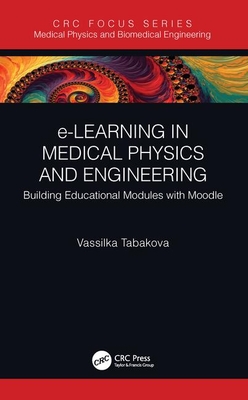From Technological to Virtual Art (Hardcover)
暫譯: 從科技到虛擬藝術 (精裝版)
Frank Popper
- 出版商: MIT
- 出版日期: 2006-12-22
- 售價: $1,800
- 貴賓價: 9.8 折 $1,764
- 語言: 英文
- 頁數: 504
- ISBN: 026216230X
- ISBN-13: 9780262162302
立即出貨 (庫存=1)
買這商品的人也買了...
-
 VHDL 與 FPGA 設計
VHDL 與 FPGA 設計$450$405 -
 IPv6 新世代網際網路協定暨整合技術
IPv6 新世代網際網路協定暨整合技術$650$585 -
 Eclipse 整合開發工具 (Eclipse)
Eclipse 整合開發工具 (Eclipse)$540$427 -
 $1,176Computer Organization and Design: The Hardware/Software Interface, 3/e(IE) (美國版ISBN:1558606041)
$1,176Computer Organization and Design: The Hardware/Software Interface, 3/e(IE) (美國版ISBN:1558606041) -
 $599The Language of New Media (Paperback)
$599The Language of New Media (Paperback) -
 物件導向 OO 技術基礎講座
物件導向 OO 技術基礎講座$300$234 -
 計算機組織與設計 (Computer Organization and Design: The Hardware/Software Interface, 3/e)
計算機組織與設計 (Computer Organization and Design: The Hardware/Software Interface, 3/e)$680$646 -
 XML 網頁製作徹底研究, 3/e
XML 網頁製作徹底研究, 3/e$650$514 -
 ASP.NET 2.0 深度剖析範例集
ASP.NET 2.0 深度剖析範例集$650$507 -
 SQL 語法範例辭典
SQL 語法範例辭典$550$435 -
 軟體工程 (Sommerville/ Software Engineering, 8/e)
軟體工程 (Sommerville/ Software Engineering, 8/e)$680$666 -
 Dreamweaver 搞不定的網頁設計效果:CSS 關鍵救援密碼
Dreamweaver 搞不定的網頁設計效果:CSS 關鍵救援密碼$520$411 -
 $1,068Cryptography and Network Security, 4/e (IE) (美國版ISBN:0131873164) (平裝)
$1,068Cryptography and Network Security, 4/e (IE) (美國版ISBN:0131873164) (平裝) -
 2006 全新版電腦軟體應用乙級檢定-學科
2006 全新版電腦軟體應用乙級檢定-學科$180$142 -
 細談資料結構, 5/e
細談資料結構, 5/e$400$360 -
 電腦軟體應用乙級檢定術科
電腦軟體應用乙級檢定術科$380$300 -
 Fedora Core 6 Linux 實務應用(附DVD)
Fedora Core 6 Linux 實務應用(附DVD)$650$514 -
 Fedora Core 6 Linux 架站實務
Fedora Core 6 Linux 架站實務$650$514 -
 Spring 2.0 技術手冊
Spring 2.0 技術手冊$620$490 -
 Illustrator 點子爆米花
Illustrator 點子爆米花$580$458 -
 Photoshop 點子爆米花
Photoshop 點子爆米花$580$458 -
 ADO.NET 2.0 實戰講座
ADO.NET 2.0 實戰講座$690$587 -
 鳥哥的 Linux 伺服器架設篇, 2/e
鳥哥的 Linux 伺服器架設篇, 2/e$780$663 -
 The Elements of Computing Systems: Building a Modern Computer from First Principles (Paperback)
The Elements of Computing Systems: Building a Modern Computer from First Principles (Paperback)$1,620$1,539 -
 $1,425Processing : A Programming Handbook for Visual Designers and Artists, 2/e (Hardcover)
$1,425Processing : A Programming Handbook for Visual Designers and Artists, 2/e (Hardcover)
商品描述
Description
In From Technological to Virtual Art, respected historian of art and technology Frank Popper traces the development of immersive, interactive new media art from its historical antecedents through today's digital, multimedia, and networked art. Popper shows that contemporary virtual art is a further refinement of the technological art of the late twentieth century and also a departure from it. What is new about this new media art, he argues, is its humanization of technology, its emphasis on interactivity, its philosophical investigation of the real and the virtual, and its multisensory nature. He argues further that what distinguishes the artists who practice virtual art from traditional artists is their combined commitment to aesthetics and technology. Their "extra-artistic" goals -- linked to their aesthetic intentions -- concern not only science and society but also basic human needs and drives.
Defining virtual art broadly as art that allows us, through an interface with technology, to immerse ourselves in the image and interact with it, Popper identifies an aesthetic-technological logic of creation that allows artistic expression through integration with technology. After describing artistic forerunners of virtual art from 1918 to 1983 -- including art that used light, movement, and electronics -- Popper looks at contemporary new media forms and artists. He surveys works that are digital based but materialized, multimedia offline works, interactive digital installations, and multimedia online works (net art) by many artists, among them John Maeda, Jenny Holzer, Brenda Laurel, Agnes Hegedus, Stelarc, and Igor Stromajer. The biographical details included reinforce Popper's idea that technology is humanized by art. Virtual art, he argues, offers a new model for thinking about humanist values in a technological age.
Frank Popper is Professor Emeritus of Aesthetics and the Science of Art at the University of Paris VIII. He is the author of Origins and Development of Kinetic Art, Art, Action, and Participation, Art of the Electronic Age, and other influential works on art and technology.
Table of Contents
SERIES FORWARD vii
FOREWARD BY JOEL SLAYTON ix
ACKNOWLEDGMENTS xi
INTRODUCTION
I. The Emergence of Virtual Art (1918–1983) 9
1. HISTORICAL ANTECEDENTS (1918–1967) 11
Artistic Sources 11
Modern Light Art 13
Spectator Participation 29
Environmental Artistic Commitments 39
Technical Sources (such as Engineering and Inventions) 46
Other Sources (such as Science and Linguistics) 47
2. TECHNOLOGICAL ART AND ARTISTS (1968–1983) 49
Laser Art 49
Holographic Art 52
Eco-technological Art 59
Computer Art 64
Communication Art 75
II. Current Virtual Art and Artists (1983–2004) 87
3. MATERIALIZED DIGITAL-BASED WORK 89
Plastic Issues 89
Cognition Issues 110
Bioaesthetic Issues 118
4. MULTIMEDIA AND MULTISENSORIAL OFF-LINE WORKS 131
Language, Narration, Hypertext 131
Plastic Multimedia Issues 156
Synesthesia 161
Sociopolitical and Security Issues 175
5. INTERACTIVE DIGITAL INSTALLATIONS 181
Sensory Immersion 181
Reciprocal Aesthetic Propositions 220
Individual Commitments to Interactivity 248
Social, Environmental, and Scientific Commitments to Interactivity 275
6. MULTIMEDIA ONLINE WORKS (NET ART) 313
The Internet as a Social Communications Option 313
Personal Presence Online 355
Critical Artistic Attitudes on the Net 371
Telematic and Telerobotic Human Commitments 379
7. CONCLUSION 379
NOTES 399
BIBLIOGRAPHY 405
ARTISTS LIST 415
INDEX
商品描述(中文翻譯)
**描述**
在《從技術到虛擬藝術》中,受人尊敬的藝術與技術歷史學家 Frank Popper 追溯了沉浸式、互動性新媒體藝術的發展,從其歷史前身到今天的數位、多媒體和網絡藝術。Popper 表示,當代虛擬藝術是二十世紀末技術藝術的進一步精練,同時也是一種脫離。他認為,這種新媒體藝術的新穎之處在於其對技術的人性化、對互動性的強調、對現實與虛擬的哲學探討,以及其多感官的特性。他進一步指出,從事虛擬藝術的藝術家與傳統藝術家的區別在於他們對美學和技術的共同承諾。他們的「超藝術」目標——與他們的美學意圖相關——不僅涉及科學和社會,還關乎基本的人類需求和驅動力。
Popper 廣泛定義虛擬藝術為通過與技術的介面使我們能夠沉浸於影像並與之互動的藝術,並確定了一種美學-技術的創作邏輯,這使得藝術表達能夠通過與技術的整合來實現。在描述了從 1918 年到 1983 年虛擬藝術的藝術先驅——包括使用光、運動和電子技術的藝術——之後,Popper 研究了當代的新媒體形式和藝術家。他調查了許多藝術家的作品,包括基於數位但具體化的作品、多媒體離線作品、互動數位裝置以及多媒體在線作品(網絡藝術),其中包括 John Maeda、Jenny Holzer、Brenda Laurel、Agnes Hegedus、Stelarc 和 Igor Stromajer。所包含的傳記細節強化了 Popper 的觀點,即技術是通過藝術而人性化的。他認為,虛擬藝術為在技術時代思考人文價值提供了一種新模型。
Frank Popper 是巴黎第八大學美學與藝術科學的名譽教授。他是《動態藝術的起源與發展》、《藝術、行動與參與》、《電子時代的藝術》等多部有影響力的藝術與技術著作的作者。
**目錄**
系列前言 vii
前言 by Joel Slayton ix
致謝 xi
導言
I. 虛擬藝術的出現 (1918–1983) 9
1. 歷史前身 (1918–1967) 11
藝術來源 11
現代光藝術 13
觀眾參與 29
環境藝術承諾 39
技術來源(如工程和發明) 46
其他來源(如科學和語言學) 47
2. 技術藝術與藝術家 (1968–1983) 49
激光藝術 49
全息藝術 52
生態技術藝術 59
電腦藝術 64
傳播藝術 75
II. 當前虛擬藝術與藝術家 (1983–2004) 87
3. 具體化的數位基礎作品 89
塑料問題 89
認知問題 110
生物美學問題 118
4. 多媒體與多感官離線作品 131
語言、敘事、超文本 131
塑料多媒體問題 156
共感 161
社會政治與安全問題 175
5. 互動數位裝置 181
感官沉浸 181
互惠美學命題 220
對互動的個人承諾 248
對互動的社會、環境和科學承諾 275
6. 多媒體在線作品(網絡藝術) 313
互聯網作為社會交流選擇 313
在線的個人存在 355
對網絡的批判性藝術態度 371
遠程和遠程機器人對人類的承諾 379
7. 結論 379
註釋 399
參考文獻 405
藝術家名單 415
索引

























